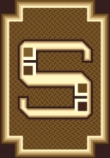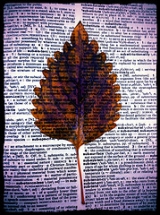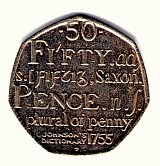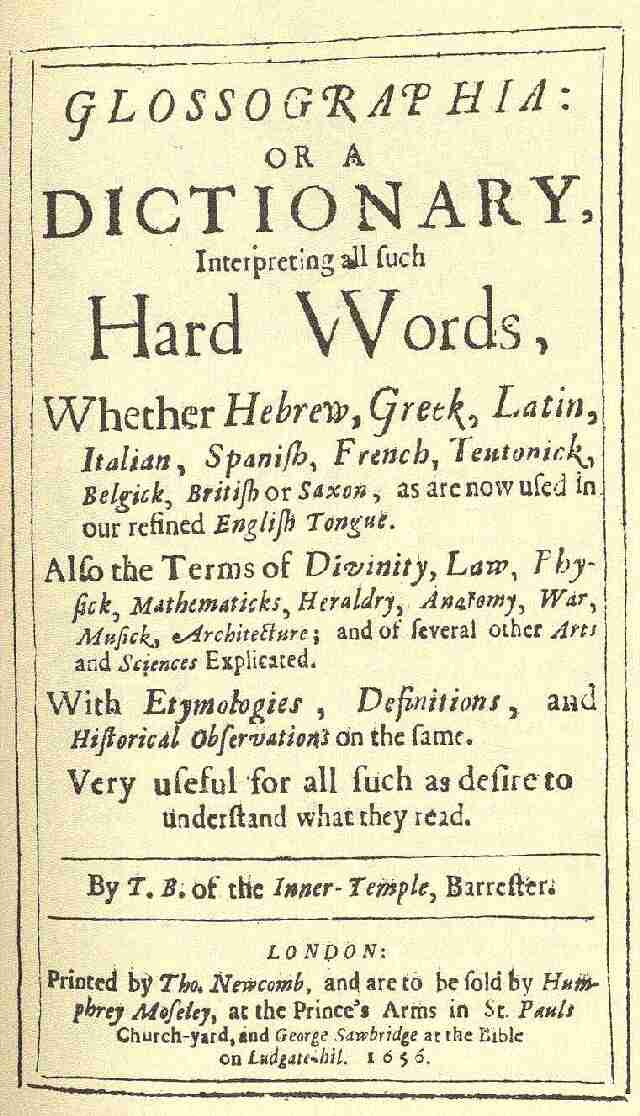
.
Numerical Prefixes
In this page, I discuss a curious set of unusual words: adjectives and nouns for numerical values or multiples. What do you call a group of eleven musicians? An athletic competition with six events? An event that recurs every twenty years? It can be very difficult to figure out what sort of prefix to use, and there are plenty of exceptions to the rules. Because many of these words aren't found in dictionaries (particularly as the relevant numbers get larger), having some general principles can help. Thus, where other word lists of the Phrontistery are simply listed in "word: definition" form, this page will try to show you, in tabular format, how to construct your own terms from the basic principles, and to give you a better grasp of this tricky topic. Let's begin!
In general, these words are made by combining a prefix derived from Latin or Greek number words and a suffix indicating the type or category of the thing being counted. If you know a lot of word etymologies, you can usually figure out whether a word takes a Latin or Greek numerical prefix if you can tell whether the suffix you want to use is Latin or Greek in origin. However, if you can't work out the etymology, it's probably best to just look at the lists below, which indicate which prefixes are used with which suffixes. Besides, there are exceptions to this general rule.
- mathematical bases "-al"
- adjectives of relation "-nary"
- groups of musicians "-tet"
- words for multiples of something "-uple"
- number of years between two events "-ennial"
- number of sides of something "-lateral"
- words for large numbers / exponents "-illion"
- less common categories: number of leaflets or petals on a leaf or flower "-foliate", chemical valencies "-valent"; division into parts "-partite" or "-fid".
In this first table, I've listed the Latin words for 1 through 12 along with the appropriate prefix that is derived from it. For each of the above categories, check the appropriate column and find the word list. In cases where the word couldn't be found in regular dictionaries, I've extrapolated from the other words and used appropriate prefixes and endings to construct the correct form. In such hypothetical cases, the word is marked with an asterisk and put it in italics.
| Numeral | Prefix | Base | Relation | Music | Multiple | Yearly | Sides | Exponent | |
|---|---|---|---|---|---|---|---|---|---|
| 1 | unus | uni | N/A | unary | (solo) | (single) | (annual) | unilateral | (million) |
| 2 | duo | bi/duo | binal | binary | duet | duple/double | biennial | bilateral | billion |
| 3 | tres, tria | tri | trial, tertial | trinary, ternary | trio | triple/treble | triennial | trilateral | trillion |
| 4 | quattuor | quadri/quart | quartal | quaternary | quartet | quadruple | quadriennial | quadrilateral | quadrillion |
| 5 | quinque | quinque/quint | quintal | quinary, quinquenary | quintet | quintuple | quinquennial | quinquelateral | quintillion |
| 6 | sex | sex(t), se | sextal | senary/sexenary | sextet | sextuple | sexennial | *sexilateral | sextillion |
| 7 | septem | sept | septimal | septenary | septet | septuple | septennial | septilateral | septillion |
| 8 | octo | oct | octal, octaval | octonary | octet | octuple | octennial | octilateral | octillion |
| 9 | novem | nonus/novem | nonal | nonary | nonet | nonuple, noncuple | novennial | *nonilateral | nonillion |
| 10 | decem | dec(a), de | decimal | denary | dectet | decuple | decennial | *decilateral | decillion |
| 11 | undecim | undec, unde | undecimal | undenary | *undectet | *undecuple | undecennial | *undecilateral | undecillion |
| 12 | duodecim | duodec, duode | duodecimal | duodenary | *duodectet | duodecuple | duodecennial | *duodecilateral | duodecillion |
So far, so good. We can see that there are a few exceptions to the general rule, particularly for the numbers 1 and 2, and in some cases such as "quinary / quinquenary" where multiple forms exist. Since I'm not being hardline about "proper" forms, I'm including all the forms normally used, even when they don't strictly follow the rules. Up to 12, the Latin prefixes hold up pretty well; most of the forms exist; only "sexilateral", of all the hypotheticals, is less than nine. My theory is that it sounds too lewd to have been adopted as the term for something with six sides. Well enough, then.
- number of angles of plane figures "-gon"
- number of faces of solid figures "-hedron"
- number of angles in a shape or line "-angle"
- number of rulers in a government "-archy"
- number of meters in a poetic verse"-meter"
- number of objects in a group "-ad"
- number of events in an athletic competition "-athlon"
- less common categories: numbers of syllables in words "-syllabic"; sets of books or other works "-logy"; number of fingers "-dactylic"; number of languages spoken "-glot"; number of parts "-merous"; number of columns "-style"; amount of carbon in many chemical molecules "-ane", "-ene", "-yne".
| Numeral | Prefix | Polygon | Polyhedron | Angle | Ruler | Meter | Group | Event | |
|---|---|---|---|---|---|---|---|---|---|
| 1 | en | mono | N/A | N/A | N/A | monarch | N/A | monad | N/A |
| 2 | dyo/duo/di | di/dy | N/A | N/A | N/A | diarch, dyarch | dimeter | dyad | biathlon |
| 3 | treis, tria | tri | triangle | N/A | triangle | triarch | trimeter | triad | triathlon |
| 4 | tessera | tetra | tetragon | tetrahedron | quadrangle | tetrarch | tetrameter | tetrad | tetrathlon |
| 5 | pente | penta | pentagon | pentahedron | pentangle | pentarch | pentameter | pentad | pentathlon |
| 6 | hexa | hex | hexagon | hexahedron | hexangle | hexarch | hexameter | hexad | *hexathlon |
| 7 | hepta | hept | heptagon | heptahedron | heptangle | heptarch | heptameter | heptad | heptathlon |
| 8 | okto | oct | octagon | octohedron | octangle | octarch | octameter | octad | *octathlon |
| 9 | ennea | ennea | enneagon, nonagon | enneahedron | *enneangle | *ennearch | *enneameter | ennead | *enneathlon |
| 10 | deka | dec(a) | decagon | decahedron | decangle | decarch | decameter | decad(e) | decathlon |
| 11 | hendeka | hendec(a) | hendecagon, undecagon | hendecahedron | *hendecangle | hendecarch | *hendecameter | *hendecad | *hendecathlon |
| 12 | dodeka | dodec(a) | dodecagon | dodecahedron | *dodecangle | dodecarch | *dodecameter | dodecad(e) | *dodecathlon |
The situation with the Greek terms is a little more complex than with the Latin, but not excessively so. Latin prefixes are used for some words for polygons, although the Greek prefix is to be preferred. "Biathlon" should, by all rights, be "diathlon", "triangle" is used for a plane figure as well as angles (instead of 'triagon'), and there are very few terms for 1 and 2. Of course, this is partly because there's no such thing as a two-faced polyhedron, and not much point in describing a single athletic event as a "monathlon" ...
So far, we've stuck to the numbers 1 through 12. We have pretty solid sequences of words, although the words relating to 9 and 11 are, to be fair, extremely rare. But moving to the teens, decades, 100 and 1000, the words become much more sparse. Still, given the right adjectives and a little creativity, we can construct many hypothetical words that should be understandable. Table 3 lists the higher Latin numbers and prefixes. I'll stick to listing the numerical bases and adjectives of relation, and let you figure out the rest on your own, on the pattern described above. Most of the other terms aren't found in dictionaries (how often do you need to describe something that recurs every 60 years?), with the exception of those for 20, where terms like vicennial and vigintillion are sometimes used. To wit:
| Numeral | Prefix | Base | Relation | |
|---|---|---|---|---|
| 13 | tredecim | tredec, tridec | *tridecimal | *tridenary |
| 14 | quattuordecim | quatuordec | *quatuordecimal | *quatuordenary |
| 15 | quindecim | quinde(c) | *quindecimal | quindenary |
| 16 | sedecim | sede(c) | hexadecimal | *sedenary |
| 17 | septendecim | septende(c) | septendecimal | *septendenary |
| 18 | duodeviginti | decennoct | *decennoctal | *decenoctonary |
| 19 | undeviginti | decennov | decennoval | *decennonary |
| 20 | viginti | vige, vice | vigesimal, vicesimal | vigenary, vicenary |
| 30 | triginta | trige, trice | trigesimal | tricenary |
| 40 | quadraginta | quadrage | quadragesimal | quadragenary |
| 50 | quinquaginta | quinquage | quinquagesimal | quinquagenary |
| 60 | sexaginta | sexage | sexagesimal | sexagenary |
| 70 | septuaginta | septuage | septuagesimal | septuagenary |
| 80 | octoginta | octage | octagesimal | octogenary |
| 90 | nonaginta | nonage | nonagesimal | nonagenary |
| 100 | centum | cente | centesimal | centenary |
| 1000 | mille | mille | millesimal | millenary |
Now, things get complicated. For the teens, things are made complex by the fact that instead of "duodeviginti" (literally 'two-from-twenty') and "undeviginti" ('one-from-twenty') for 18 and 19, the prefixes for them are 'decennoct' (ten-eight) and 'decennov' (ten-nine). And, what's this? Hexadecimal, not "sexadecimal"? "Hex-" is Greek, which goes against the rule set for all the other bases. I suspect, again, that prudishness has led to "hexadecimal" getting the nod over "sexadecimal". Actually, other than "hexadecimal", all these words for 13 through 19 are extremely rare to non-existent, so it might be best to just forget about them. Moving on to the decades, most of these are also quite rare. However, many nouns exist, derived from the appropriate adjectives of relation, which identify a person of a particular age; "octogenary" becomes "octogenarian" - someone in their eighties.
For the higher Greek numbers, there's almost no evidence in English for the use of these words, but mathematicians sometimes need words for polygons and solid figures, so here are the appropriate prefixes and words for 13-20, 100 and 1000.
| Numeral | Prefix | Polygon | Polyhedron | |
|---|---|---|---|---|
| 13 | tr(e)iskaideka | triskaideca, trideca | triskaidecagon, trisdecagon | triskaidecahedron |
| 14 | tettares kai deka | tetrakaideca, tetradeca | tetradecagon, tetrakaidecagon | tetrakaidecahedron |
| 15 | pentekaideka | pendeca | pendecagon | pendecahedron |
| 16 | hekkaideka | hexadeca | *hexadecagon | *hexadecahedron |
| 17 | heptakaideka | heptadeca | heptadecagon | *heptadecahedron |
| 18 | oktokaideka | octodeca | *octodecagon | *octodecahedron |
| 19 | enneakaideka | enneadeca | *enneadecagon | *enneadecahedron |
| 20 | eikosi | icos(a) | icosagon | icosahedron |
| 100 | hekaton | hecato | *hecatogon | hecatohedron |
| 1000 | chilioi | chilia | chiliagon | chiliahedron |
The ancient Greek teens all contain the conjunction kai "and", but except for 13 and 14, the prefixes used in English normally omit it. All of the words in Table 4 are very rare (if they are found at all), except for icosahedron. Note that in modern Greek, the numerals for the teens are different than the ancient forms, reversing triskaideka to dekatreis, tettares kai deka to dekatettares, and so on.
Curiosities
Now that I've outlined some of the basic features and rules to allow you to construct your own numerical words on the basis of those outlined here, I've compiled a triskaidecad of unusual facts and trivia relating to this very interesting topic.
- The five perfectly regular solid figures are the tetrahedron, hexahedron, octohedron, dodecahedron and icosahedron (4, 6, 8, 12 and 20 sides, respectively). These five, along with the decahedron (10 sides), are the shapes of the dice most commonly used in role-playing games. However, the triacontahedron (30-sided die) is sometimes used, and I've also seen a heptahedron (7-sided die). There's even a 100-sided die, or hecatohedron, though it goes by the trademarked name of Zocchihedron after its inventor. It has so many sides that it's basically a sphere, which means that it has the annoying tendency to roll off flat surfaces.
- The term decennoval (of or pertaining to 19), though now quite obsolete, was, of all the "teen" words, rather more common in earlier times. The reason for this is that, when calculating the date of Easter (a important and controversial task of medieval clergy), one uses the Metonic cycle - the fact that the moon's phases will recur on the same days every 19 years.
- English has two entirely distinct words to refer to the belief of some Christians that the Apocalypse will come at or around the millennium (an important thing to keep in mind at this point in history). The first is millenarian, derived from the Latin millenarius (of a thousand), and closely related to millenary shown in Table 3. The second is chiliastic, taken from the Greek word for 1000, as described in Table 4. Despite their differing etymologies, millenarian and chiliastic are essentially synonymous. For an unusual poem I've written on the topic, check out this page.
- You may have noticed a resemblance between the word duodenary (relating to twelve) and the duodenum (a portion of the small intestine). This is not a coincidence; the duodenum was originally known as the intestinum duodenum digitorum "intestine of twelve fingers", because it was perceived to be about twelve fingersbreadth in length by the medieval anatomists who named it in the 14th century while mucking around with corpses.
- It is curious that, although words exist for people in their forties (quadragenarian) through one hundreds (centenarian), we must construct words for those in their twenties and thirties (vicenarian and tricenarian, respectively). This pattern is quite the opposite than that for most of these series of words, where there are words for lower but not for higher numbers. Probably, this is because these terms are words of respect, and it's no great feat to reach 20 or 30. A quick look on search engines will show that quadragenarian is the rarest of these terms, with word frequency increasing up to octogenarian, then decreasing thereafter. This probably reflects the increased esteem accorded to those up to their eighties, but then, life expectancies being what they are, a decrease in frequency for nonagenarian and centenarian because few people reach such great ages.
- The largest musical grouping I could find to which a "-tet" name is assigned is a "brass duodectet" arrangement of Gabrieli's Canzon Noni Toni in Twelve Voices. Since this is the only place where the word's ever been used (to my knowledge), it hasn't shown up in any dictionaries yet. Incidentally, the smallest number of players required for a jazz band to "officially" qualify as a "big band" is 10, or a dectet. However, I don't believe there is a Bureau of Big Band Nomenclature to clamp down on violations of this rule ...
- In addition to "centennial" and "millennial", normally used for the 100th and 1000th anniversaries of events, one may add the series of Latin prefixes for 2 through 9 above to either word to indicate 200th through 900th (or, more rarely, 2000th through 9000th) anniversaries. But some people can't wait 100 years to celebrate. In North America in the late 19th century, when many cities, churches, etc., were over 100 years old but not yet 200, the term sesquicentennial (150th anniversary) was coined (from Latin sesqui-, of the ratio of 3 to 2). Even fifty years was too long for the town of Delavan, Tazewell County, Illinois, whose leaders consulted Funk and Wagnall's in 1962 for a word for a 125th anniversary, and were told that quasquicentennial, an irregular formation from Latin quadrans, one-quarter, might do, but that it wouldn't get into the dictionary until it became more regular. It's now in the Oxford English Dictionary, and has been used quite a few times since, mainly in the American Midwest.
- Many Christian churches celebrate a series of yearly events: Septuagesima, Sexagesima, Quinquagesima and Quadragesima, on the successive Sundays roughly 70, 60, 50 and 40 days prior to Easter, respectively. Quadragesima marks the beginning of Lent, which lasts forty days.
- Much of English poetic literature prior to the modern era was written in iambic pentameter, in which each line of verse contains five sets of "short-long" syllables. You will have no doubt encountered iambic pentameter, because both Chaucer's Canterbury Tales as well as most of Shakespeare's output is written in this meter.
- While we normally think of English numbers as purely decimal (and this is certainly true of our positional digital numbers), in fact the situation is more complex. For most people, the series (thousand, million, billion, trillion ...) proceeds in multiples of 1000; that is, there are special words for exponents of 1000 just as there are for exponents of 10 (ten, hundred, thousand), but not for 10000 or 100000. Thus, we might properly say that our numerals have both a decimal and a millesimal (or perhaps millenary) base. The situation is more complex because, traditionally, the British say "milliard" for 109 where Americans say "billion", "billion" for 1012 where Americans say "trillion", and "trillion" for 1018 where Americans say "quintillion". This system is decimal, millesimal (because there are special words for 1000 and 1,000,000) and millimillesimal (if I can coin a word for a base of 1,000,000). Fortunately, the British seem to be moving towards the usage preferred in most of the rest of the world. I say 'fortunately', not because I have any great love of American influence, but because in this case, it simplifies the system greatly.
- If anyone cares, "centesimal" is an anagram of "lemniscate", a mathematical term referring to the locus of the foot of the perpendicular from the center of a conic upon the tangent. If you know what that means, you may be impressed that it has a numerical anagram.
- One of the most peculiar numeral words in English is "zenzizenzizenzic", which means "the eighth power of a number", as in "The zenzizenzizenzic of 2 is 256". It was used only once in English, in Robert Recorde's The Whetstone of Wit (1557). It is derived from an equally-obsolete "zenzic", which referred to the square of a number. It is the only English word with six Zs, and is thus, if I may be allowed to coin a term, hexazetic.
- I would be remiss if I didn't mention one of the most common phobias in the Western world, triskaidekaphobia, the fear of the number 13. It's also spelled "triskaidecaphobia", reflecting the tendency in Greek numerical prefixes to change the letter k to c.
I hope you have found this site to be useful. If you have any corrections, additions, or comments, please contact me. Please note that I am not able to respond to all requests. Please consult a major dictionary before e-mailing your query. All material on this page © 1996-2021 Stephen Chrisomalis. Links to this page may be made without permission.








